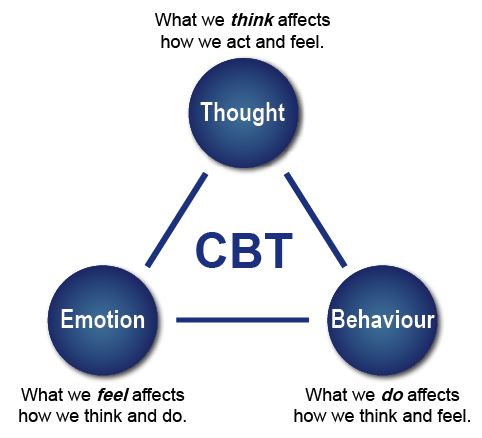Nursing Practice – Ethical and Legal Issues
Title: Ethical and Legal Issues in Nursing Practice. Professional ethics involves the use of reasonable and regular communication, information, medical skills, emotions and doctrines in nursing practice. The mission of nurses is to provide health care of high quality and improving and maintaining public health. Ethics being a vital element of professionals in the healthcare department plays a major role in the moral behaviors of nurses to patients. This, in turn, influences patients’ health improvement.
Furthermore, the principles of nurses are to respect human rights, dignity and values. Nursing comprises three basic principles of caring, namely ethics, clinical judgement, and care. Nurses must adhere to ethical rules and carry out their duties according to governmental and governing statutes. Moreover, nurses encounter various dilemmas, ethical or legal in nature in the middle of performing their duties. However, other nurses may be unprepared to tackle dilemmas and be unable to answer questions pertaining to their conduct.
Ethics is a principle that describes what is expected in terms of right and wrong while a law is a set of rules that involves punishment in the event of an offence. A nurse often encounters the law through possible litigation in which the nurse may have unlikely involved in. Furthermore, a nurse can also encounter the law in case of the unlawful act is done like malpractice and negligence. Nurses undergo various situations and may be classified as ethically correct but not legally accepted, or legally unaccepted but ethically correct. Circumstances such as death, euthanasia, and abortion may put a nurse into a quagmire.
In the event of a nurse giving a patient incorrect medication, the nurse automatically hides the fact to protect himself or herself from being caught by the law. This scenario raises relevant questions focusing on the legal and ethical issues of nurses. Another circumstance that is ethical but not legal is whereby a patient is allowed to smoke bhang as a remedy for an illness. In addition to that, there is a situation that relates to ethical and legal issues focusing on a patient being forced to a drug or a test contrary to his or her will or without proper information.
Conflicts existing between the Law and Ethics in the Nursing Practice
When nurses are faced with dilemmas and need to make professional decisions, the nurses are held amid two contradictory sets of demands. The first set is from a professional mission and the second one is from lawful provisions. Healthcare professionals and nurses become entangled in civil or unlawful justice organizations. This occurs when nurses commit an unlawful act by not renewing the license for nursing in time.
Other unlawful actions may involve abuse of the substance, as in the case where nurses obtain medications by not following procedures within medical settings. Nurses ought, therefore, to differentiate morality and law as an action may be immoral but legal. For example, a directive to carry out resuscitation for a patient who is dying might be legal but immoral. However, an act might be illegal but moral like in a case where there is an emergency of a patient falling ill at home, a driver may pass the speed limits when taking the patient to the hospital and this may be considered as illegal but it is moral.
Conflict may emerge between the law and ethics in the case where a nurse decides that there is no reason for certain medical services such as therapy services. In such a case, the professional code of ethics states that no fees should be charged by the practitioner for such services. Meanwhile, nurses are legally obligated to render services to the patients indiscriminately. In relation to that, conflict in the nursing practice might arise from customer expectations and opinions such as a patient’s rejection of blood transfusion. In some instances, agreement with a legal obligation might look as unjust, harmful, or invalid.
Besides that, nurses stay away from an absolute agreement, particularly when the law seems as contradicting ethics. Sometimes, nurses are not ready to sacrifice own values or patient well-being to a system that is not perfect outlining regulations and rules. For example, the failure of nurses to adhere to professional responsibility in revealing private information. Additionally, conflicts may emerge between ethics and law in the process of making a decision for the dying and incompetent, as well as matters regarding people with disability and the right to life matters.

Ways by which Nurses can Negotiate Conflicts Existing between the Law and Ethics
Instances which conflict between the law and ethics might manifest might rotate around values such as fairness, patient choice, truthfulness, privacy, patient well-being, respect for life, confidentiality and privacy, and preserving commitments to oneself, patients, colleagues in nursing, a profession in nursing, and practice settings. The values remain importantly shared by the public. However, in the case where two of the set values can be applied to a condition, though supporting diverging courses of action, conflict emerges.
The ethics code defines the mission of nursing practice of meeting patient needs and answering to surrounding forces that may stem conflicts between law and ethics. What may put a nurse to a risk in the profession of nursing is when there is a conflict between a nurse’s ethical duty to a patient and the nurse legal duty to the employer.
There are no sufficient procedures in resolving the quagmires prominent in the practice of nursing. Nurses that acts as a patient advocate may not be legally protected by the ethical codes and might be abstract to put on with regularity. On the contrary, the government in some instances does not permit nurses to attend to certain individuals or carrying out their practice in certain manners. This is in contrary to the practice in the nursing, specifically on the grounds of responsibility to care for patients.
The nurses, therefore, are expected by the practice code to respect the conclusions taken by the patient, so long as it is well-versed consent. Sometimes patients or patients’ families may not follow recommendations provided or treatments by the provider which in turn brings conflict and a moral quagmire for the nurse. Moral dilemma comes from situations’ where two concise or more moral values apply, but they backup mutually varying foundations of action.
How Nursing Conflicts between the Law and Ethics were handled historically by the Nurses: Reacting to prejudicial rules
Conflicts arise in the event that a nurse encounters a burden that is reasonable, conscientious objection, a personal danger, and matters pertaining personal competence. A burden that is not reasonable manifests in the event that the nurse’s competence to provide safe care and satisfy Standards of Practice is challenged by expectations that are not practical, insufficient resources, and threats on personal welfare. Nurses are neither allowed to neglect their patients nor are they authorized to position themselves in circumstances where the care delivery would bring dangers that are not logical to their individual safety. This involves diseases that are communicable, violence, sexual, and physical abuse. In the case of personal competence, the expectation from nurses is that they should practice constantly and competently acquire new knowledge and skills within the surrounding environment of practice.
Nurses are only allowed to provide care that is not beyond their level of competency. In the rural areas, the nurse may encounter cases whereby he or she is requested to provide care beyond his or her capability hence the nurse often provides care that he or she is capable to offer. It is therefore appropriate for a nurse to seek advice from his or her employer in case of conscientious oppositions where a certain method of care conflicts with the nurse’s religious beliefs and moral. The nurse should, therefore, refrain at all cost to provide care. An individual judgement which conflicts with the patient’s lifestyle ought not to provide a basis for conscientious objection.
Historically, nurses have made use of the expert code of practice in resolving conflicts which emerge between law and ethics by polite communication, and the direction provided by the code of conduct in the nursing practice. This code comes from the common belief that the main roles of nurses involve preventing ailments, easing client’s suffering, and the safeguarding, promoting and restoring patient’s health among the caring of people, families, groups, and societies. Institutions that deals with healthcare are expected to offer multidisciplinary ethics committees that provide education, support and counselling on ethical matters.
Through this, a platform on which variable views are expressed, provide support for caregivers and reduce legal risks for the institution. Professional standards help the nurses to understand the conduct of professional nursing by making sure that the nurses are in the track of providing unique care for the sick, the nurses showing signs of commitment to the communities, outlining the essential ethical morals for professional conduct, offering guidance to the nursing professionals in their mission for self-regulation.
Conclusion
Nurses should therefore, apply the codes to practice in coming up with decisions of ethics by recognizing the patient’s right to competent, ethical and safe care. However, in some cases, the nurse’s personal rights and principles can be in contrary to the patient’s right to be given care. In such a situation, nurses are required to define the facts and point out the dilemma. Upon highlighting the dilemma, the nurses are required to simplify the dilemma, after which the nurses should implement options that are available and come up with a plan and ultimately implementing the suggested plan. Nurses should not contravene the set of ethical and legal standards in the nursing practice on the basis of satisfying client well-being. In the event of a group of nurses violating the set legal and ethical standards due to the conflict between held principles and the ethical obligations, it is important to guarantee that the nurses’ behaviors are rooted in sound legal judgment, instead of self-interest, rationalization, or prejudice.
References
Danjuma, A., Adeleke, I., & Ominiyi, S. (2015). Knowledge, attitude and practice of nursing ethics and law among nurses at Federal Medical Centre, Bida. American Journal of Health Research, 3(1-1), 32-37.
Dehghani, A., Mosalanejad, L., & Dehghan-Nayeri, N. (2015). Factors affecting professional ethics in nursing practice in Iran: a qualitative study. BMC medical ethics, 16(1), 61.
Zahedi, F., Sanjari, M., Aala, M., Peymani, M., Aramesh, K., Parsapour, A., & Dastgerdi, M. V. (2013). The code of ethics for nurses. Iranian journal of public health, 42 (Supple), 1.
Relevant Blog Posts
Nursing Dissertations
Diversity Adaptation Inclusion Nursing Education
Did you find any useful knowledge relating to nursing practice in this post? What are the key facts that grabbed your attention? Let us know in the comments. Thank you.




